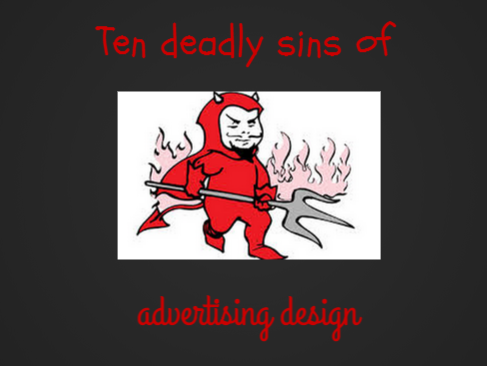Tag: no consistency
Losing Brand Attention: Simple Action You Can Take To Prevent It
Do you express feelings and emotion often with your customers? Are you aware of the ways you are losing brand attention? Well, remember this: the more feelings and emotion you express, the more attention to your brand. And the more influence it can create. Not rocket science is it? But without it, you will be losing brand attention.
Feelings have a critical role in the way customers are influenced.
David Freemantle
As long as it’s positive, there is no such thing as too much brand attention. If you play your cards right, you can roll all of that great attention into growth for your company. Here are some of the mistakes businesses make with their branding and the best and most creative steps to get people to notice you and your brand.
The other day one of my readers commented I was the oldest person she knew social media content all the time.
Then she said it was a compliment.
We both laughed.
Then there was an awkward pause.
While her statement clearly wasn’t true, being relatively seasoned in business means I had learned many valuable brand lessons that would have been great to know when my business career started.
That’s how it has always been.
So, in keeping, here are 12 ways for losing attention to your brand and, most importantly, what you should be doing to prevent them:
Losing brand attention … not listening
Wondering what the most important part of being social is? It is listening, hands down in our opinion. And listening means hearing. So if you don’t start with great listening, you will immediately turn off a majority of consumers.
I learned this one quite early in my marketing and management career. Remember your first step in online marketing is not broadcasting messages. To establish great attention to your brand, build engagement with consumers by making listening to the backbone of your conversation.
Related post: What 10 Killer Brands Stand for; It’s Personal
Only focus on traditional branding messages
Have you noticed how much marketing has changed in the last decade? Most people have. So when you use just traditional marketing techniques, customers imagine you are stuck in time. Not a good thing.
One tip we think is most important is storytelling. Think about the stories that you were told as children. They are etched into our subconscious. Use pictures and videos to tell your stories in creative new ways. Ways that will be remembered and talked about.
The rising cost of consumer attention … no consistency
Do you know your target customers and their likes and dislikes? If so, this in your guide to consistent topics.
Always be consistent in the subjects you know your customers are interested in. Select the new variants but stick with the subject categories.

Lack any brand personality
Everyone has a personality or at least 98% of the populace. Your business reflects the personalities of its leaders either by choice or by accident. You know which is best, don’t you?
Every successful brand has a specific tone of voice. One that relates to the brand’s personality. And yes, of course, a brand has a distinctive personality. Decide what personality you want for your brand and let your tone reflect it. Take the initiative.
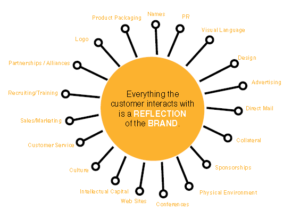
Complex messages
It is difficult to be heard above all the noise in the marketplace. So if you want to grab attention and hold it, you must avoid complex messages.
Make your marketing stand out with simple messages. The best technique is with great visuals that convey your messages.
Not a people person
A Chinese proverb once said if you don’t like to smile, don’t open a shop. The same goes for being a person who doesn’t like to deal with people. Nothing is more damaging to business.
Being social is all about making friends as well as building and exploring customer relationships. Continually look for new ways to engage customers and remember engagement is a two-way street starting with listening.
Limited learning
Now more than ever, things are changing at blazing speed. Consumers notice businesses that are stuck in time, refusing to learn.
There are only two ways to keep up. They are continuous learning and applying what you learn. Spend time understanding changing trends and patterns. Apply them as often as you can.
No networking effort
Don’t like networking either on or off-line? Not sure why you are in business, are you?
Don’t be fooled by the deceptive simplicity of being social on-line. Building an effective network takes a lot of time, energy, and resources. Schedule time to make it happen and devote the energy required.
Frequently falling behind
Yes, all the changes in the business world are adding to your workload. No doubt about it. You can’t stay the way you are without falling further behind.
Familiarize yourself with new tools and applications, and select the ones that help to reduce your workload and that can help you and your customers in other ways. Consider carefully what platforms are best for your customers. You can’t do them all.
No message relevancy
You are always adding new customers, aren’t you? And current customers are trying new things and ways. Ignore these at the peril of your marketing message relevancies.
Derive timely and valuable insights to customer wants and needs. Talk about useful, helpful topics on these insights. Give your customers good reasons to return.
Too much, too fast
Never bite off more than you can handle. If you do, you will become frustrated and, most often, give up.
Employing social media takes a lot of time and energy. And there are no shortcuts. So start small and grow a little at a time. Be patient, it takes time for good results.
Put emphasis on content quantity
It’s not about the quantity of your marketing content. Put your energy in quality content rich with information that is interesting and helpful. It is not the number of fans you have. Nor is it about the numbers of people you follow. Fans count very, very little … make no mistake.
Forget about the fan numbers and concentrate on the engagement of customers and making friends. Relationships build trust and customer advocacy.
The bottom line
To be effective in this new era, we as marketers need to see our jobs differently. No more just focusing on metrics like clicks, video views or social media shares. We must successfully integrate our function with other business functions to create entire brand experiences that serve the customer all the way through their experiences throughout the business.
We can do better at grabbing and holding attention. Much better. But first, we need to stop seeing ourselves as crafters of clever brand messages and become creators of positive brand experiences.
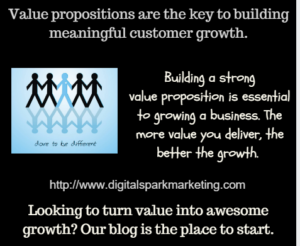
Need some help in capturing more customers from your branding design strategies? Such as creative branding ideas to help the differentiation with potential customers?
Call today for a FREE consultation or a FREE quote. Learn about some options to scope your job.
Call Mike at 607-725-8240.
All you get is what you bring to the fight. And that fight gets better every day you learn and apply new ideas.
When things are not what you want them to be, what’s most important is your next step. Call today.
Test. Learn. Improve. Repeat.
Are you devoting enough energy to improving your continuous learning for yourself and your team?
Do you have a lesson about making your brand marketing better you can share with this community? Have any questions or comments to add in the section below?
Digital Spark Marketing will stretch your thinking and your ability to adapt to change. We also provide some fun and inspiration along the way. Call us for a free quote today. You will be amazed how reasonable we will be.
More reading on brands and branding from Digital Spark Marketing’s Library:
New York Yankees … 11 Awesome Lessons From Yankees Brand
The CVS Rebranding Strategy: a Case Study
Building a Brand … A How-to Guide for Small Business
6 Favorite Brands and Why I Like Them So Much
Brand Management … 12 Ways to Humanize the Brand to Build Trust
Walmart E-commerce Strategy … 6 Reasons Why It Won’t Beat Amazon
Mike Schoultz is a digital marketing and customer service expert. With 48 years of business experience, he consults on and writes about topics to help improve the performance of small business. Find him on G+, Facebook, Twitter, Digital Spark Marketing, and LinkedIn.
10 Deadly Sins of Graphic Design Advertising
We found advertising works the way the grass grows. You can never see it, but every week you have to mow the lawn. Good thought from the Nielsen Company. Do you occasionally read or watch ads? We would say people don’t read ads. However, they do read or watch what interests them. So if you are going to create compelling and persuasive advertising, you are going to have to create something interesting that will help consumers want to read. And you absolutely must avoid the ten deadly sins of graphic design advertising.
Check out our thoughts on creative marketing.
And, oh by the way, what you write must be more interesting and entertaining than the millions of other advertisements out there. Now that is a daunting task, isn’t it?
Daunting is not a strong enough description, is it? According to Nielsen, there are 27,000,000 pieces of content are shared each day. And Statistic Brain says that our average attention span has dropped from 12 seconds in 2000 to 8 seconds – one second less than a goldfish!
Related: Some Great Story and Storytelling Examples to Study
We check our phones 150 times per day. We check our email up to 30 times an hour. And the amount of information in the world continues to double every 18 months.
All this available information and data is creating a battle for customer attention between brands, publishers, and every one of us who creates content. But more importantly, it’s forcing businesses to think and act like publishers and creative designers. What about you?
Do your ad designs have the power to encourage the right sort of conversations? We’ll discuss this point in a bit.
It has been said that advertising is the price to be paid for being unremarkable. That may be true, but I have noticed, despite the growth in online marketing, that even remarkable businesses also advertise the old fashion way. It is an essential component of your marketing campaign, for awareness or consumer education of your value.
If you are going to be successful in advertising, you absolutely must avoid these ten deadly sins of advertising design:

Graphic design advertising … too many choices
Ever heard of Hick’s law? This law states that the time required for a customer to make a decision is a direct function of the number of available choices.
Too many choices are not a good design as they make decisions more difficult. And that is not a good idea, is it?
Not keeping promises
This sin is closely related to the one on lack of trust. When you make a commitment to a potential customer in an ad, and then don’t deliver, you most often lose the client for good. Not a desirable outcome is it?
Visual distractions
Abstract or conceptual visuals tend to distract viewers. People prefer symbolic language and images that relate to the senses. People are far less receptive and responsive to language and images that relate to concepts.
Life is experienced through the senses and using symbolic language and images that express what people feel, see, hear, smell or taste are easier for people to understand
Sins of advertising design … too much design
Don’t use every inch of white space because you can. Leave some “breathing room” so people can digest your message. We believe the more, the better.
Remember people will take away only one or two things from what they see. The clutter of a design keeps them from spotting the takeaways you desire.
Lack of trust
Customers more easily remember companies that they know and trust. Focus your ads on either getting known to start the trust building or conveying memorable messages. Doing both at once is not a good practice.

No call to action
The whole point of the story in advertising is to deliver the desired call to action efficiently. If the audience does not clearly understand the call you want to action after seeing the ad, then you are missing the real opportunity.
Graphic design advertising … often too ambiguous
Marketing or advertising, you need to create information that your customers find interesting and worth talking about and remembering. If the information is obscure it certainly won’t be remembered.
Showing no originality
Don’t present material that overwhelms people with sameness. Unique messaging grabs attention much more readily. You only have a few moments to communicate, so use powerful, focused and straightforward words – such as ‘free,’ ‘unbelievable,’ etc.
No consistency
Being inconsistent means your information is not prioritized. You should choose information that’s most important and make it your primary element of the ad. Every piece of information in your ad should be weighted according to its importance.
Also, the idea is to make things more user-friendly by an aesthetic consistency of style and appearance.
Too much text
When you have prioritized information in your ad from most critical to least, start stripping away the least important text. Remember the best you will do is get readers to remember 2-3 things. Too much text and the readers quickly move on, remembering nothing.
The bottom line
I’m not as much surprised as saddened that such nutty beliefs and misconceptions that advertising (and marketing overall) can lead otherwise smart, creative people to squander their effort, money, and the patience of would-be consumers.
I’m sure there are binders full of a rationale for why it’s stunningly brilliant stuff, and there’ll be metrics that declare the spot a wild success. But believing those arguments, or valuing those outcomes, requires that you swallow the message hook line and sinker. Not me.
So if you remember one thing from this article, remember this:
In marketing or advertising, you need to create information that your customers find interesting and worth talking about and remembering. And stand for things that potential customers value.
We believe an effective ad is interesting, entertaining, and stands for things viewers can stand behind. We believe it is persuasive and certainly creates the right kind of conversation.
Unfortunately, there is no easy solution to the advertising industry’s woes. No grand initiative, strategy wrapped in a bow, or presentation deck can bring back the glory days. The reality is that in order to survive, ad agencies will have to learn to experiment, risk failure, and pivot quickly. In effect, they will have to stop thinking like ad agencies.
What do you think?
Heard enough? I rest my case.
Need some help in capturing more customers from your advertising? Creative ideas to help the differentiation with your customers?
Call today for a FREE consultation or a FREE quote. Learn about some options to scope your job.
Call Mike at 607-725-8240.
All you get is what you bring to the fight. And that fight gets better every day you learn and apply new ideas.
When things are not what you want them to be, what’s most important is your next step. Call today.
Test. Learn. Improve. Repeat.
Are you devoting enough energy to improving your advertising design?
Do you have a lesson about making your innovation better you can share with this community? Have any questions or comments to add in the section below?
Mike Schoultz is the founder of Digital Spark Marketing, a digital marketing and customer service agency. With 40 years of business experience, he blogs on topics that relate to improving the performance of your business. Find them on G+, Twitter, and LinkedIn.
Digital Spark Marketing will stretch your thinking and your ability to adapt to change. We also provide some fun and inspiration along the way. Call us for a free quote today. You will be amazed at how reasonable we will be.
More reading on marketing strategy from Digital Spark Marketing’s Library:
Case Studies to Evaluate New World Marketing Concepts
How to Frame Marketing Messages for Optimum Engagement
Some Great Story and Storytelling Examples to Study
Jaw Dropping Guerrilla Marketing Lessons and Examples
Like this short blog? Follow Digital Spark Marketing on LinkedIn or add us to your circles for 3-4 short, interesting blogs, stories per week.
Jeanne Bliss Says Avoid Customer Service Myths to Succeed
The problem is never how to get new ideas into your mind, but how to eliminate the old ideas. Customer service designs that are remarkable get talked about. And getting talked about in this light is a great thing, right? This is especially true in many customer service myths. See what Jeanne Bliss says.
No question. So telling yourself these myths on customer experience is a big no-no and won’t take you where you want to go will they?
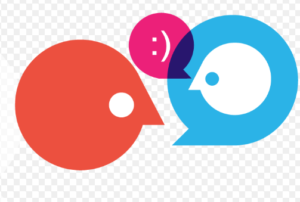
Check out our thoughts on customer focus.
We often get questions and comments on delivering great customer service and experiences. From clients and customers commenting on our blog.
Many relate to customer service actions that are reminders of what we already know (but we occasionally forget). These are big enablers of customer service and experience.
They usually won’t create Wow service on their own, but their absence is noted by customers and lowers excellent customer service to just good enough or less.
Related: How Marriott Courtyard Turned Customer Failure into Service Recovery
Much of how we help people deliver better customer experience and service is with examples. These are fun and useful because we all have them (since we’re all customers.) And sometimes it helps to look at examples of things we shouldn’t say to customers.
That is if we want them to keep coming back.
So, here is my top 20 list of myths on customer service and experience not to tell yourself. They are things you should never say to a customer that we often use in client workshops:
Jeanne Bliss says … don’t follow a script
Because scripts and checklists are all the rage now, employees are scripted to death. Many feel (and some are told) they are not there to think but to follow the script. And often that’s exactly what they do, even when it makes no sense and wastes the customer’s time.
When I hear a script, I wonder if the person has the capability to help me. Not a confidence builder, is it? If you have a script or checklist, pay attention to the real world too. Your customers will thank you.
Jeanne Bliss says … don’t say not my error
Never pass the buck or blame someone else, especially if they’re part of your company. You don’t look any better or smarter by doing so.
But you certainly appear uninterested in solving the customer’s problem. Your time is better spent fixing and helping rather than blaming and finger-pointing.
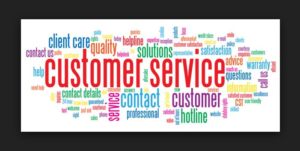
Customer service myths … employees don’t care
If you hire people that are not delighted to be in a customer service role, to be social and servicing people, you’ll likely end up with employees that don’t care.
Nothing is worse for a customer’s experience.
Jeanne Bliss says … limited employee expertise
Putting new employees on the firing line with no or limited training results in employees who have to hand customers off or plead no knowledge. Both are equally bad. Employees that are not motivated to learn rapidly are also a bad situation waiting to happen.
Jeanne Bliss says … limited employee authority
No empowerment for employees to do the right things? You might as well build a robot to respond to customers. Nothing worse than having an employee that knows what needs to be done, but is not empowered to do it.
No consistency
As we stated in the introduction, you need to have all good and delighted customer experiences. Satisfactory and bad experiences will negate all the delighted customers talk about, simply because negative results usually get talked about more.
Need a lot of focus on the consistency of the good and delighted experiences.
Happy Customer … How to Improve Your Business With These Actions
Customer service myths … no interest in customer feedback
Many customers are itching to tell you how to improve. If they are not given an opportunity, it degrades the experience. Likewise, customers always feel good when they see positive improvements.
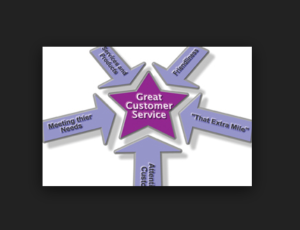
Jeanne Bliss says … no personalized engagement
Employees who rarely smile and engage socially at one on one engagement are at a very serious disadvantage in being able to create a delightful customer experience.
In the longer term, a business needs to build relationships, particularly with its best customers. Hard to do with no personalized engagement.
Customer service myths … pushy sales techniques
All selling should be off limits in any situation. Hard selling is a definite no-no for any good customer experience. Very little turns off customers much faster than pushy sales techniques.
Jeanne Bliss says … poor listeners
Two-way conversations begin with employees listening carefully before responding. Being stuck on transmit mode in a two-way conversation won’t go anywhere fast.
Poor follow through
If a customer is told X will be done, they should feel that it will happen. Hopefully faster and better than promised. If something unexpected happens, a good experience demands the customer be notified and kept informed.
Jeanne Bliss says … don’t meet expectations
If promises are not kept, expectations by the customer not achieved, negative experiences result. Too negative and your business will lose the customer forever. The absolute last thing you want.
Saying you are sorry
I am sorry you feel that way. People often say this as an apology. But it’s not. Because it again shifts the blame to the customer.
If you’re sorry, then say so. Don’t qualify it. When customers hear an apology like this, they understand what you’re doing. You’re saying, “I know I’m supposed to apologize but I don’t want to.”
Related: Crash Course on How to Apologize to a Customer
A better option is just to say “I’m sorry this happened” or simply “I’m sorry.”
It tells the customer you are sorry for the situation the customer is in without making you responsible for it.
Customer service myths … just calm down
Is there ever a situation where this has the intended effect? Not that we can see. It seems like you are tossing gasoline on the fire.
More like they’ll get even angrier while they tell YOU to calm down. They’ll escalate the matter, and they’ll probably become a former customer.
Listen, let them vent, have them talk to someone else if they want. But never tell them to calm down.
Recording: Your call is very important to us
I hear this so often I ignore it. And that is how it should be. A recorded message is not the place to tell your customers how much you value their business. Do it with a real, live, caring human being.
That’s a message your customers will believe (and respond to).
Jeanne Bliss says … admit you made a mistake
We all know customers make mistakes. Everyone makes mistakes. But when you point it out directly and blatantly, you risk offending or embarrassing your customer. How would you like it?
Jeanne says no blaming is needed. Instead, focus on helping them understand the right way to do things so that they won’t make a mistake again.
Talk to the corporate office
If a customer has feedback, a request or a complaint, they don’t care who YOU have to forward it to. They don’t care that another person in your organization will deal with it.
What they want is for YOU to take the initiative to get the ball rolling. It’s not the customer’s job to go trying to find the exact person who should handle their situation. That’s YOUR job.
Jeanne Bliss says … it’s our company policy
With too many employees this is just an easy way to get out of doing something they’d rather not do.
If you want to help then find a way. Don’t hide behind company policy. And if you can’t work around the policy, offer an alternative or escalate the matter for the customer.
Jeanne says if your customers see you are trying to help, they’ll be less disappointed even if they don’t get exactly what they want.
Customer service myths … please take a number
If I were the customer in this situation, “huh?” is the only response I’d be able to muster, assuming I didn’t just walk out. But it happens.
People get so focused on policies, procedures, systems, and rules that they forget about a little tool called “common sense.”
No one else has complained
This one always amazes me. Are we taking a survey? Are we voting on the situation? If enough other customers have a problem, then you’ll listen to me (or handle my problem)? Is that really how you want to be perceived?
Of course not, that’s ridiculous. But I’ve heard employees (and managers) say this all too often. The problem is they are focusing on their perspective. They should be focusing on the customer and helping solve a problem.
The bottom line
Remember one simple thing here: all employees need to view themselves as customer advocates, period.1 Customer service actions that are remarkable get talked about. And getting talked about in this light is a great thing, right? No question.
Do you have a lesson about making your customer experience better you can share with this community? Have any questions or comments to add in the section below?

Need some help in building better customer trust from your customer experiences? Creative ideas to help grow your customer relationships?
Call today for a FREE consultation or a FREE quote. Learn about some options to scope your job and pay for results.
Call Mike at 607-725-8240.
All you get is what you bring to the fight. And that fight gets better every day you learn and apply new ideas to make your customer experiences better.
When things are not what you want them to be, what’s most important is your next step. Call today.
Test. Learn. Improve. Repeat.
Are you devoting enough energy to improving your continuous learning for yourself and your team?
Digital Spark Marketing will stretch your thinking and your ability to adapt to change. We also provide some fun and inspiration along the way. Call us for a free quote today. You will be amazed at how reasonable we will be.
More reading on customer service and customer experience from our Library:
Customer Orientation … the Worst Customer Experience Mistakes
10 Next Generation Customer Service Practices
Customer Service Tips … How to Take Charge with Basics
Mike Schoultz is a digital marketing and customer service expert. With 48 years of business experience, he consults on and writes about topics to help improve the performance of a small business. Find him on G+, Facebook, Twitter, Digital Spark Marketing, and LinkedIn.
Customer Orientation: How Not to Become a Loser
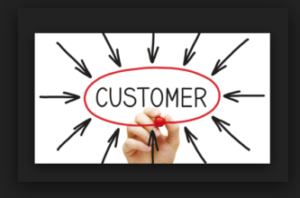
Peter Drucker once said: Quality in a service or product is not what you put into it. It is what the client or customer gets out of it. He certainly understood the worst customer orientation mistakes, didn’t he?
The end state quality of what the customer received was what counted. Including the experience of the customer while he purchased the item. Often that is what was remembered the most. That is especially true for the worst customer experience mistakes.
People often say that “nothing succeeds like success,” and, to a certain extent, that’s true. Successful companies get good press, find it easier to win new business as well as procure and retain top talent.
However, with success also comes growth and that brings its own set of challenges, especially for young companies. Often, it sends promising new stars into a tailspin from which they never recover.
There are lots out there to advise companies on how to be successful, but very little about how to manage the growth success brings. I’ve spent most of my career building entrepreneurial companies, done several turnarounds after things went awry, and uncovered some common problems as well as some successful solutions.
Check out our thoughts on customer focus.
Related value: Customer Experience Improvements Begin with Understanding Their Value
Let’s start with an understanding of good customer experience:
So what constitutes the best customer experience?
The quality of your company’s customer experience is ultimately determined by the way customers feel after their last interaction. If the customer is unhappy, your company’s customer experience is bad. If the customer doesn’t have a feeling one way or the other, your company’s customer experience is mediocre. If the customer feels good, your company’s customer experience is satisfactory.
But if the customer feels delighted, your company’s customer experience is a substantial competitive advantage. That is the only one that matters to success.
One other thing to consider. One bad customer experience usually negates ten satisfactory and delightful customer experiences. So you need to pay attention to the cardinal sins which create these bad experiences.
Here’s my list of the worst rookie customer orientation and experience mistakes that you can make way too often.
No apology
Refusing to say you’re sorry.

Lacking sincerity
Saying you’re sorry in a way that makes it obvious that you aren’t.
No Consistency
As we stated in the introduction, you need to have all good and delighted customer experiences. Satisfactory and bad experiences will negate all the delighted customers talk about, simply because negative results usually get talked about more. Need a lot of focus on consistency of the good and delighted experiences.
Related post: Customer Experience Optimization … 10 Employee Actions that Lower It
No interest in customer feedback
Many customers are itching to tell you how to improve. If they are not given an opportunity, it degrades the experience. Likewise, customers always feel good when they see positive improvements.
Lateness
Being late, being misleading about timetables, being insensitive to the timing issues and pacing preferences and expectations of your customers. Remember: a perfect product, delivered late, is a defect.
Poor employee treatment
Treating your employees like dirt and expecting them to treat their customers like gold. You get a lot better results (not to mention karma) by emulating institutions like the Ritz-Carlton with its central operating philosophy of putting employees and customers first: “We are ladies and gentlemen serving ladies and gentlemen.”

Lacking flexibility
Burning your customers (and therefore yourself) because something bad happened once, or even never. Not taking checks, for instance, because one time someone bounced one.
Disrespectful language
Forgetting it’s not what you do, it’s how you do it, specifically, it’s the language you use. Language needs to be gentle, kind, and brand appropriate—without sounding stilted. And language includes getting the “words without words” right at your company as well: yielding the right of way to customers, never having your back to a guest, and so on.
Cues for quality
Failing the “cues to quality” test: customers in every setting pick up cues to quality from the darnedest places. Typos in your signs, dirty shoelaces on your nurses—this stuff matters.
Employees don’t care
If you hire people that are not delighted to be social and servicing people, you’ll likely end up with employees that don’t care. Nothing is worse for a customer’s experience.
Customer orientation … limited employee expertise
Putting new employees on the firing line with no or limited training results in employees who have to hand customers off or plead no knowledge. Both are equally bad. Employees that are not motivated to learn rapidly are also a bad situation waiting to happen.
Failing the beginnings and endings
Getting everything right except the beginning and the ending—the two most important moments as far as a customer’s memory is concerned.
Not realizing the beginning starts before the beginning. That means customers are picking up info and implications about you before they ever arrive at your official website or the front door of your establishment.
Lacking quality employees

Hiring the wrong people and expecting to be able to give good customer service anyway.
No employee empowerment
Hiring the right people but then failing to give them power: the power to help customers in ways you haven’t thought of, the power to design their tasks differently, the power to do their best for you.
Overpowering personalization
LimitedTrying to be all Dale Carnegie by inserting your customer’s name into every other line of a conversation – but using the wrong pronunciation. Or, personalize your correspondence with a customer – but misspelling her name.
Forced self-service
Getting excited about your newly-installed self-service channel, and then forcing every customer to use it, whether it suits them or not.
Limited employee authority
No empowerment for employees to do the right things? You might as well build a robot to respond to customers. Nothing worse than having an employee that knows what needs to do, but is empowered to do it.
No personalized engagement
Employees who rarely smile and engage socially at one on one engagement are at a very serious disadvantage in being able to create a delightful customer experience. In the longer term, a business needs to build relationships, particularly with its best customers. Hard to do with no personalized engagement.
Pushy sales techniques
All selling should be off limits in any situation. Hard selling is a definite no-no for any good customer experience. Very little turns off customers much faster than pushy sales techniques.
Poor listeners
Two-way conversations begin with employees listening carefully before responding. Being stuck on transmit mode in a two-way conversation won’t go anywhere fast.
Poor follow through
If a customer is told X will be done, they should feel that it will happen. Hopefully faster and better than promised. If something unexpected happens, a good experience demands the customer be notified and kept informed.
Here are some things to help prevent these mistakes:
Move your organization’s mindset to customer centered and away from the natural tendency of self-centered (a more difficult task than you would imagine). Don’t sell; help customers make more informed buying decisions.
Get to know your customers on a personal level, particularly your most important customers. Recognize that they are not all alike. Understand and prioritize your customer segments. “Experiences designed for everyone satisfy no one.”
Continuously learn as much as you can about your customers … their wants/needs, likes/dislikes. This is particularly important to do on a continuous basis to reflect the changing nature of customer priorities. Share this information broadly within your organization and get everyone participating.
Reinforce your organization’s customer experience mindset by measuring and incentivizing the objectives that you seek.
Good customer experiences depend on good employee experiences based on their actions, personality, and personal demeanor. Make it easy for them to do the right thing … empower them to act on your behalf.
If you are not convinced of the importance of the customer experience your business creates and its influence on your business and commit to the long-term journey … don’t start.
Related post: 10 Ways to Employ Customer Experience for Influence
Don’t meet expectations
If promises are not kept, expectations by the customer not achieved, negative experiences result. Too negative and your business will lose the customer forever. The absolute last thing you want.
The bottom line
Here’s the thing, social isn’t just a new way of marketing, it’s a new way of running a business. Many businesses certainly have figured this out and are using social marketing and improved customer experience to grow their business rapidly.
What did I leave out? Do any of these not deserve to be on the list? Any great examples (tragic examples) of anything on the list? I’d enjoy hearing from experts and civilians alike in the comments below, and I’ll update the article as great ones come up.

So what’s the conclusion? The conclusion is there is no conclusion. There is only the next step. And that next step is completely up to you. But believe in the effectiveness of a delightful customer experience. And put it to good use.
It’s up to you to keep improving your creative, social marketing and customer experience efforts. Lessons are all around you. In this case, your competitor may be providing the ideas and or inspiration. But the key is in knowing that it is within you already.
All you get is what you bring to the fight. And that fight gets better every day you learn and apply new lessons.
When things go wrong, what’s most important is your next step.
Try. Learn. Improve. Repeat.
Are you devoting enough energy improving your customer experience?
Do you have a lesson about making your customer experience better you can share with this community? Have any questions or comments to add in the section below?
Mike Schoultz is the founder of Digital Spark Marketing, a digital marketing and customer service agency. With 40 years of business experience, he blogs on topics that relate to improving the performance of your business. Find them on G+, Twitter, and LinkedIn.
Digital Spark Marketing will stretch your thinking and your ability to adapt to change. We also provide some fun and inspiration along the way. Call us for a free quote today. You will be amazed how reasonable we will be.
More reading on customer experience from our Library:
Client Satisfaction …10 Secrets to Improve Customer Experience
Building a Customer Experience Strategy for Business Success
Random Acts of Kindness for Customer Experience Improvements
Like this short blog? Follow Digital Spark Marketing on LinkedIn or add us to your circles for 3-4 short, interesting blogs, stories per week.

